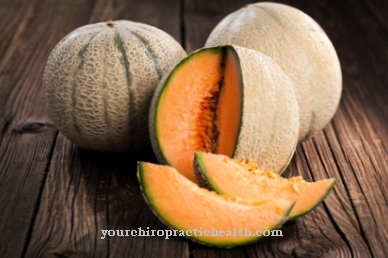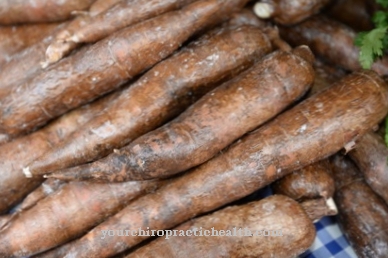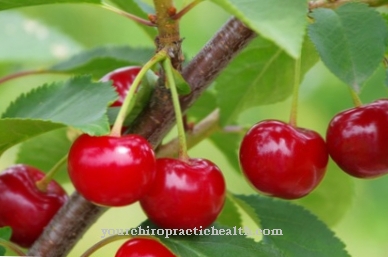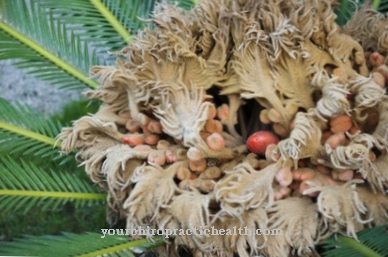Of the Pine nut comes from the pine-like pine that can grow up to 30 meters tall. The kernels are located in the egg-shaped cones and are ripe after about three years. After opening the cones, they drop the seeds. Inside is the edible pine nut. In the unpeeled form, the kernels can be kept for many months.
What you should know about pine nuts

The delicate pine nuts are one of the most expensive nuts along with the macadamia nut. The umbrella-shaped, imposing treetop, which is visible from afar, is characteristic of the pine tree. The tree is often over 100 years old.
The needles are evergreen and are in pairs. Even in ancient times, the pine, which is probably native to the Iberian Peninsula, was very popular due to its tasty kernels. Today the trees grow all over the Mediterranean. Harvesting the very slowly growing pine is only worthwhile after around 15 years. This is done very laboriously and time-consuming by hand. First of all, the pine nut has to be removed from the cones. This is followed by the removal of the thick and hard shell and the seed skin that covers it.
Now all that's left is the elongated, creamy white pine nut. Therefore it is one of the most expensive nuts. The sweet pine nuts have a slightly almond-like taste and are therefore well suited for fruit salads and cakes. Pine nuts are available in the same quality all year round.
Importance to health
It is no secret that the pine nuts are very healthy, because nutritionists and doctors often point out the ingredients of the kernels and the healing properties. The pine nuts contain a lot of vitamins B1, B2 and A as well as niacin.
The latter is involved in numerous enzymatic processes. It also has an antioxidant effect and supports the regeneration of the skin, DNA, muscles and nerves.Vitamin B2 supports the conversion of proteins, fats and carbohydrates into energy. Vitamin A is involved in the formation of the skin, mucous membranes and cartilage tissue. It's also important for the eyes. Pine nuts also contain a lot of selenium. This trace element is one of the essential nutrients that the body cannot produce itself, so it has to be supplied to the body through food. Selenium protects the cells against free radicals and thus against infections, premature aging and cancer.
The large proportion of vitamin A in the pine nut further intensifies these positive effects. For people with a high physical performance profile, the vitamin E content is optimal, because this vitamin acts as a powerful antioxidant, which protects the cells from harmful free radicals, especially during stress. With more than 600 mg phosphorus per 100 g, the pine nuts cover almost the daily requirement, which is 700 g on average. The mineral ensures, for example, strong bones and healthy cell structure.
The high magnesium content is particularly interesting for athletes because it supports the muscles. Pine nuts are rich in vegetable fats, but they do not contain any cholesterol. Regular consumption of the kernels improves metabolism, memory performance and the nervous and immune systems.
Ingredients & nutritional values
| Nutritional information | Amount per 100 gram |
| Calories 673 | Fat content 68 g |
| cholesterol 0 mg | sodium 2 mg |
| potassium 597 mg | carbohydrates 13 g |
| protein 14 g | vitamin C 0.8 mg |
The pine nut has many valuable ingredients. Regular consumption is therefore recommended. Although it contains around 50 percent fat, it consists of many healthy unsaturated fatty acids. The abundant phosphorus is remarkable. 100 grams of pine nuts almost cover the daily phosphorus requirement.
The selenium and vitamin A content is also quite high. Furthermore, the protein content and the carbohydrates in the pine nut, which have a filling effect, are convincing. The kernels are also rich in calcium, potassium, magnesium and folic acid, in the trace elements iron, zinc, iodine and fluorine, in the B vitamins and in the vitamins A, D and E and in niacin.
Intolerances & allergies
If a large number of pine nuts are consumed or eaten on many days in a row, a metallic taste will appear in the mouth after one to three days. This is just a malfunction with no subsequent dangers. The pine nuts can be problematic for people who suffer from a food allergy to the seeds.
Shopping & kitchen tips
The pine nuts are usually offered already peeled. The seeds should not have any discoloration or holes. Even small quantities are very expensive, which is due to the long ripening time and the laborious harvest. Since the kernels are very high in fat, it is advisable not to keep them too long as they could go rancid.
A dry and cool storage is particularly important. It is therefore advisable to store them in the refrigerator in the sealed container and to consume them within about six weeks. Unpeeled, however, they can be kept for a few months. The origin of the pine nuts is different, the aroma varies depending on the growing area. In China and Korea, for example, the taste is not very strong. In addition, the ingredients of the kernels from Asia have more fat and calories than those of the products from southern Europe. The pine nuts from Pakistan are said to be very spicy, while those from Spain and Portugal have a resinous taste.
Preparation tips
In the eastern regions in particular, pine nuts have enjoyed great popularity for decades. They are packaged ready to use, which makes them very easy to use. They are mostly used as a whole. They are only finely ground to sprinkle a pesto. In order for the unique nutty and finely resinous taste to develop optimally, the pine nuts can be roasted in the oven or in a pan without fat until they are lightly browned.
The slight turpentine taste also evaporates here. In Asia and the Mediterranean countries, the pine nuts are used in meat and vegetable dishes and in fillings. The delicate seeds are also popular in sauces, soups and salads. The fine taste of the pine nuts goes perfectly with sweet and savory dishes of all kinds, for example on a pizza, in a pasta, a noodle salad or with goat cheese. Many dishes get even more kick from the pine nuts. Briefly seared with sage in butter, the aromatic pine nuts create a delicious sauce. This goes perfectly with potatoes and asparagus.
They can also be sprinkled in a muesli with fresh fruit, a fruit or herb quark. The pine nuts are often used in oriental cuisine for puddings, jams and desserts, but also for rice dishes. This shows how versatile the pine nuts can be used. No matter whether sweet or savory, the pine nuts are used.













.jpg)

.jpg)
.jpg)











.jpg)